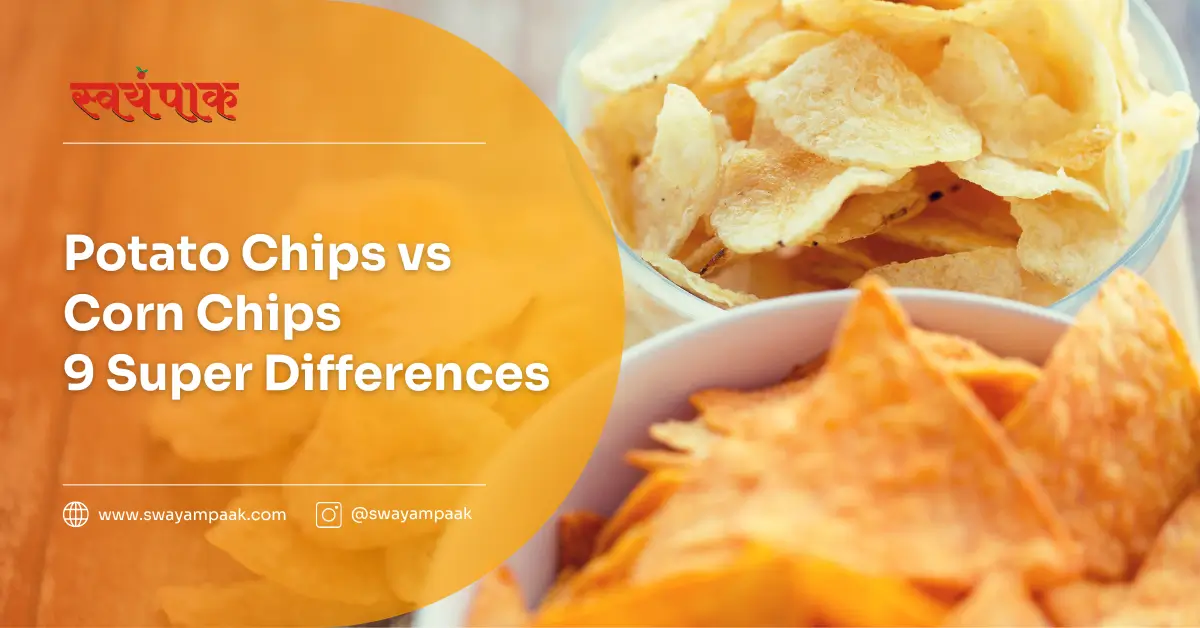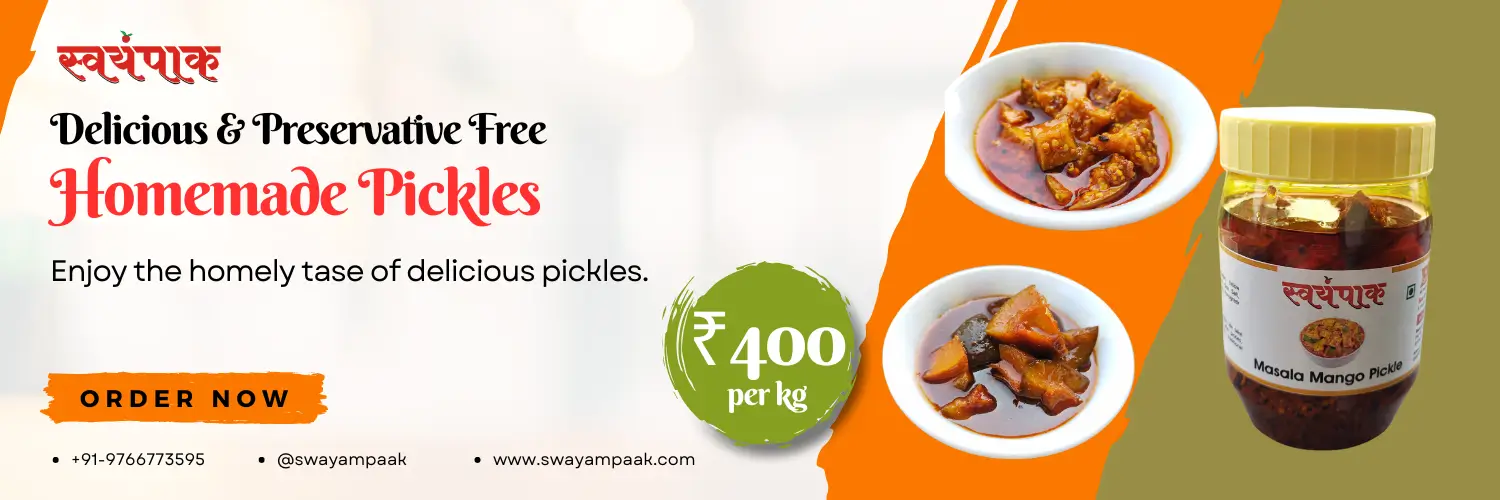Snack foods have been a part of human culture for centuries, with chips emerging as a popular option in the 19th century. Today, potato and corn chips dominate the snack market, offering convenient, flavorful options for consumers worldwide.
This blog post about “Potato Chips vs Corn Chips” will explore the differences between these two chip varieties, examining their production methods, taste profiles, cultural significance, and impact on health and the environment.
Potato Chips vs Corn Chips: Let’s Explore The Differences
Potato Chips
Potato chips are typically made by thinly slicing potatoes and deep-frying them until crisp. The manufacturing process involves washing, peeling, and cutting potatoes before frying and seasoning. Common flavours include salt and vinegar, sour cream and onion, and barbecue.
Varieties range from kettle-cooked to baked options. Nutritionally, potato chips are high in carbohydrates and fat, with moderate protein content. They often contain significant amounts of sodium and sometimes trans fats, depending on the cooking oil used.
Corn Chips
Corn chips are made from cornmeal that is moistened, shaped, and then fried or baked. The manufacturing process involves grinding corn into flour, mixing it with water and other ingredients to form a dough, shaping it, and then cooking.
Popular flavours include nacho cheese, spicy chilli, and lime. Varieties include traditional triangular chips and round tostadas. Nutritionally, corn chips are also high in carbohydrates and fat, but they typically contain more fibre than potato chips. They’re often fortified with vitamins and minerals.
Taste Comparison: Potato Chips vs Corn Chips
Potato chips generally have a lighter, more delicate flavour that allows seasonings to stand out prominently. They tend to be crunchier and dissolve quickly in the mouth. Corn chips have a more robust, earthy flavour derived from the corn itself.
They typically have a heartier crunch and a grittier texture that lingers longer. The taste difference is most noticeable when comparing plain varieties, as strong seasonings can mask the underlying chip flavour.
World Market Share: Potato Chips vs Corn Chips
Potato Chips Market Leaders:
- Frito-Lay (PepsiCo)
- Brands: Lay’s, Ruffles, Walkers (UK)
- Estimated global market share: 30-35%
- Kellogg’s
- Brands: Pringles
- Estimated global market share: 5-7%
- Intersnack Group
- Brands: Chio Chips, funny-frisch
- Strong presence in Europe
- Calbee
- Market leader in Japan
- Expanding globally
- Kettle Foods (Campbell Soup Company)
- Known for premium, kettle-cooked chips
Corn Chips Market Leaders:
- Frito-Lay (PepsiCo)
- Brands: Doritos, Tostitos, Fritos
- Dominates the corn chips market with an estimated 40-45% share
- Grupo Bimbo
- Brands: Takis
- Strong presence in Latin America and growing in the US
- Mission Foods (Gruma)
- Known for tortilla chips
- Significant market share in the US and internationally
- Barcel (Grupo Bimbo)
- Brands: Takis
- Growing rapidly in the flavoured tortilla chip segment
- Late July Snacks (Campbell Soup Company)
- Focuses on organic and non-GMO corn chips
Key Points:
- PepsiCo’s Frito-Lay division is the dominant player in both potato and corn chip markets globally.
- Regional players often have strong local market shares, especially in countries with unique snack preferences.
- Many leaders in the potato chip market also have a significant presence in the corn chip market, and vice versa.
- The market is seeing increased competition from smaller, niche brands focusing on health, sustainability, or unique flavours.
- Mergers and acquisitions have been common in this industry, with larger companies often buying successful smaller brands.
Indian Market Share: Potato Chips vs Corn Chips
Potato Chips Market Leaders in India:
- PepsiCo India
- Brand: Lay’s
- Estimated market share: 30-35%
- Balaji Wafers
- Regional powerhouse, especially strong in Western India
- Estimated market share: 15-20%
- ITC Limited
- Brand: Bingo!
- Estimated market share: 10-15%
- Haldiram’s
- Known for traditional Indian snacks, but also produces Western-style chips
- Estimated market share: 5-10%
- Prataap Snacks
- Brand: Yellow Diamond
- Growing presence, especially in Northern and Eastern India
Corn Chips Market in India:
The corn chips market in India is significantly smaller than the potato chips market. However, it’s growing as Indian consumers become more familiar with international snack options.
- PepsiCo India
- Brands: Doritos, Nachos
- Market leader in the nascent corn chips segment
- DFM Foods
- Brand: Crax Corn Rings
- While not strictly chips, these corn-based snacks have a significant market presence
- Cornitos
- Focused exclusively on nacho chips
- Has been gaining market share in urban areas
- ACT II (Conagra Brands)
- Known more for popcorn, but also offers tortilla chips
Key Points for the Indian Market:
- The overall chips market in India is dominated by potato chips, with corn chips still being a niche category.
- Local and regional players have a strong presence, often competing effectively with multinational corporations.
- Flavour preferences in India lean towards spicy and tangy options, with many India-specific flavours like “Magic Masala” or “Indian Chaat” being popular.
- The market is seeing rapid growth, with both global and local players introducing new products regularly.
- Health-conscious alternatives, including baked chips and those made from alternative ingredients like lentils, are gaining popularity in urban areas.
- The unorganized sector, including local nameless brands, still holds a significant portion of the market, especially in rural areas.
- E-commerce and modern trade channels are becoming increasingly important for chip sales, especially in urban centres.
Versatility in Recipes and Pairings
Potato chips are often used as a crunchy topping for casseroles, crushed for breading, or as a side for sandwiches. They pair well with dips like French onion or ranch. Corn chips are frequently used in Mexican-inspired dishes like nachos and taco salads.
They’re excellent for scooping thick dips like guacamole or salsa. Both types of chips can be used as a base for creative snack mixes or crushed and used as a coating for fried foods.
Cultural Significance
Potato chips are deeply ingrained in Western snack culture, particularly in the US and UK. They’re a staple at picnics, parties, and as a lunchbox treat.
Corn chips, especially tortilla chips, are central to Tex-Mex cuisine and have gained popularity worldwide.
In some regions, corn chips are preferred due to cultural ties to corn-based diets. Both chip types have been adapted to local tastes in different countries, resulting in unique flavours and varieties around the globe.
Health Considerations
| Nutrient | Potato Chips (1 oz/28g) | Corn Chips (1 oz/28g) |
|---|---|---|
| Calories | 152 | 138 |
| Total Fat | 10g | 7g |
| Saturated Fat | 3g | 1g |
| Carbohydrates | 15g | 18g |
| Fiber | 1g | 2g |
| Protein | 2g | 2g |
| Sodium | 149mg | 170mg |
| Potassium | 363mg | 60mg |
| Vitamin C | 9.6mg | 0mg |
| Iron | 0.5mg | 0.4mg |
Both potato and corn chips are high in calories and fat, making them foods to be consumed in moderation. Potato chips typically have a higher glycemic index, potentially causing more rapid spikes in blood sugar. Corn chips often have more fibre, which can aid digestion.
Both can be high in sodium, though reduced-salt options are available. Some potato chips contain acrylamide, a potential carcinogen formed during high-temperature cooking. Baked varieties of both chip types offer lower-fat alternatives.
Environmental Impact
The production of both chip types has environmental implications. Potato farming generally requires less water than corn, but potato chip production often uses more oil for frying. Corn production can be more intensive in terms of fertilizer and pesticide use.
Packaging for both types contributes to plastic waste, though some companies are exploring biodegradable options. The carbon footprint of these snacks also includes transportation and storage considerations throughout the supply chain.
Market Share and Industry Trends
Globally, potato chips hold a larger market share, but corn chips are gaining ground, especially in regions with strong corn-based food traditions. Both markets are seeing trends towards healthier options, including chips made from alternative vegetables or grains.
Innovative flavours, often inspired by global cuisines, are regularly introduced to attract consumers. The industry is also responding to demands for more sustainable and ethically sourced products, with some brands highlighting their use of organic ingredients or environmentally friendly practices.
Global Snack Market:
- The global savoury snacks market was valued at approximately $210 billion in 2023.
- Expected to grow at a CAGR of around 4-5% from 2024 to 2029.
Potato Chips Market Share:
- Potato chips account for roughly 35-40% of the global savoury snacks market.
- In the US, potato chips make up about 30% of the salty snacks market.
Corn Chips Market Share:
- Tortilla chips (a type of corn chip) make up about 13-15% of the US salty snacks market.
- Globally, corn-based snacks account for approximately 20-25% of the savoury snacks market.
Regional Preferences:
- North America and Europe have traditionally favoured potato chips.
- Latin America shows a stronger preference for corn-based snacks.
Industry Trends:
- Healthier alternatives are gaining traction, with baked and vegetable-based chips seeing 8-10% annual growth.
- Exotic and bold flavours are increasingly popular, with spicy varieties seeing 7-9% growth.
- Sustainable packaging initiatives are becoming more common among major brands.
Key Players:
- PepsiCo (Frito-Lay) holds the largest market share globally, around 30-35% of the savoury snacks market.
- Other major players include Kellogg’s, Intersnack, and regional leaders like Calbee in Japan.
E-commerce Impact:
- Online sales of chips and snacks have been growing at 15-20% annually since 2020.
More Market Stats
Certainly. Here are some additional important statistics and facts to consider when presenting a comparison of potato chips vs corn chips:
- Global Market Size:
- Potato chips: Approximately $30-35 billion
- Corn chips (including tortilla chips): Approximately $20-25 billion
- Growth Rate:
- Potato chips market CAGR: 4-5%
- Corn chips market CAGR: 5-6% (slightly higher due to increasing global popularity)
- Per Capita Consumption (US, 2023):
- Potato chips: About 6.5 lbs (2.9 kg) per year
- Corn chips/tortilla chips: About 4.5 lbs (2 kg) per year
- Shelf Life:
- Potato chips: Typically 2-3 months
- Corn chips: Often 3-4 months due to lower moisture content
- Production Efficiency:
- Potato chips: Yield about 25-30% of the original potato weight
- Corn chips: Yield about 65-70% of original corn weight (more efficient)
- Oil Absorption:
- Potato chips: Absorb 35-40% of their weight in oil during frying
- Corn chips: Absorb 23-25% of their weight in oil
- Gluten-Free Status:
- Potato chips: Naturally gluten-free (unless flavoured with gluten-containing ingredients)
- Corn chips: Typically gluten-free, appealing to gluten-sensitive consumers
- Flavor Varieties (average per brand):
- Potato chips: 8-10 flavors
- Corn chips: 6-8 flavours
- Consumer Demographics:
- Potato chips: More evenly distributed across age groups
- Corn chips: Slightly higher popularity among millennials and Gen Z
- Seasonal Sales Peaks:
- Potato chips: Summer months, major sporting events
- Corn chips: Spike during events like Super Bowl, Cinco de Mayo
- Sustainability:
- Water usage for raw material: Corn typically requires less water than potatoes
- Carbon footprint: Varies by production method, but generally similar
- Restaurant Usage:
- Potato chips: Often served as a side dish
- Corn chips: Frequently used in appetizers (e.g., nachos)
Conclusion
Potato chips vs Corn Chips: While they share similarities with popular snack foods, they differ significantly in taste, texture, cultural roles, and to some extent, nutritional profiles. Personal preference often dictates the choice between the two, influenced by factors like cultural background, flavour preferences, and dietary considerations.
As with any snack food, moderation is key to enjoying these chips as part of a balanced diet. Ultimately, both continue to evolve, reflecting changing consumer tastes and values in the ever-dynamic snack food landscape.


